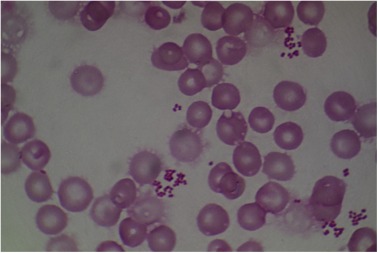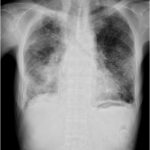Moraxella catarrhalis is a Gram-negative, aerobic diplococcus bacterium commonly associated with upper and lower respiratory tract infections. Although often found as a commensal organism in the human respiratory system, it can become pathogenic, leading to various infections, including pneumonia, particularly in immunocompromised individuals and those with chronic lung conditions.

Causes and Risk Factors
Moraxella catarrhalis pneumonia typically arises due to the following factors:
- Chronic Obstructive Pulmonary Disease (COPD): Patients with COPD are highly susceptible due to impaired lung defense mechanisms.
- Weakened Immune System: Individuals with immunodeficiency disorders, cancer, or undergoing chemotherapy have a higher risk.
- Elderly and Pediatric Populations: Aging adults and young children are more vulnerable due to underdeveloped or weakened immune responses.
- Smoking and Air Pollution: These environmental factors damage lung tissues, increasing susceptibility.
- Hospital-Acquired Infections: Patients on mechanical ventilation or those with prolonged hospital stays face increased risk.
Symptoms of Moraxella Catarrhalis Pneumonia
The clinical manifestations of Moraxella catarrhalis pneumonia are similar to other bacterial pneumonias and may include:
- Persistent cough with phlegm (sputum production)
- Shortness of breath (dyspnea)
- Fever and chills
- Chest pain aggravated by breathing or coughing
- Fatigue and muscle weakness
- Wheezing and crackling sounds in the lungs
Pathogenesis of Moraxella Catarrhalis Pneumonia
The bacterium adheres to the mucosal surfaces of the respiratory tract and releases virulence factors, leading to inflammatory responses that damage lung tissue.
Diagnosis
Diagnosing Moraxella catarrhalis pneumonia requires a combination of clinical evaluation and laboratory tests:
- Chest X-ray: Identifies areas of lung consolidation and inflammation.
- Sputum Culture: Confirms bacterial presence through microbiological analysis.
- Blood Tests: Measures white blood cell count (WBC) and inflammatory markers like C-reactive protein (CRP).
- PCR and Molecular Testing: Detects bacterial DNA for a more precise diagnosis.
- Bronchoscopy (if needed): Helps collect deep respiratory samples in severe cases.
Treatment Options
Antibiotic Therapy
Since Moraxella catarrhalis produces beta-lactamase, rendering it resistant to some penicillins, the following antibiotics are commonly used:
- Beta-lactam/Beta-lactamase Inhibitors: Amoxicillin-clavulanate
- Macrolides: Azithromycin, clarithromycin
- Fluoroquinolones: Levofloxacin, moxifloxacin
- Tetracyclines: Doxycycline (for mild infections)
Supportive Care
- Oxygen therapy for patients with severe respiratory distress
- Cough suppressants and expectorants to manage mucus production
- Adequate hydration to loosen mucus and improve clearance
- Pulmonary rehabilitation in chronic cases (e.g., COPD patients)
Prevention Strategies
- Vaccination: Pneumococcal and influenza vaccines help reduce co-infections.
- Good Hygiene Practices: Regular handwashing and mask-wearing reduce transmission.
- Smoking Cessation: Eliminating tobacco use improves lung defense mechanisms.
- Prompt Treatment of Respiratory Infections: Early intervention prevents complications.
Moraxella catarrhalis pneumonia is a significant bacterial infection that can lead to severe respiratory distress, particularly in at-risk populations. Timely diagnosis and appropriate antibiotic therapy are crucial for effective management. Preventative measures, such as vaccination and smoking cessation, play an essential role in reducing incidence rates. If you experience persistent respiratory symptoms, seek medical attention promptly to prevent complications.

